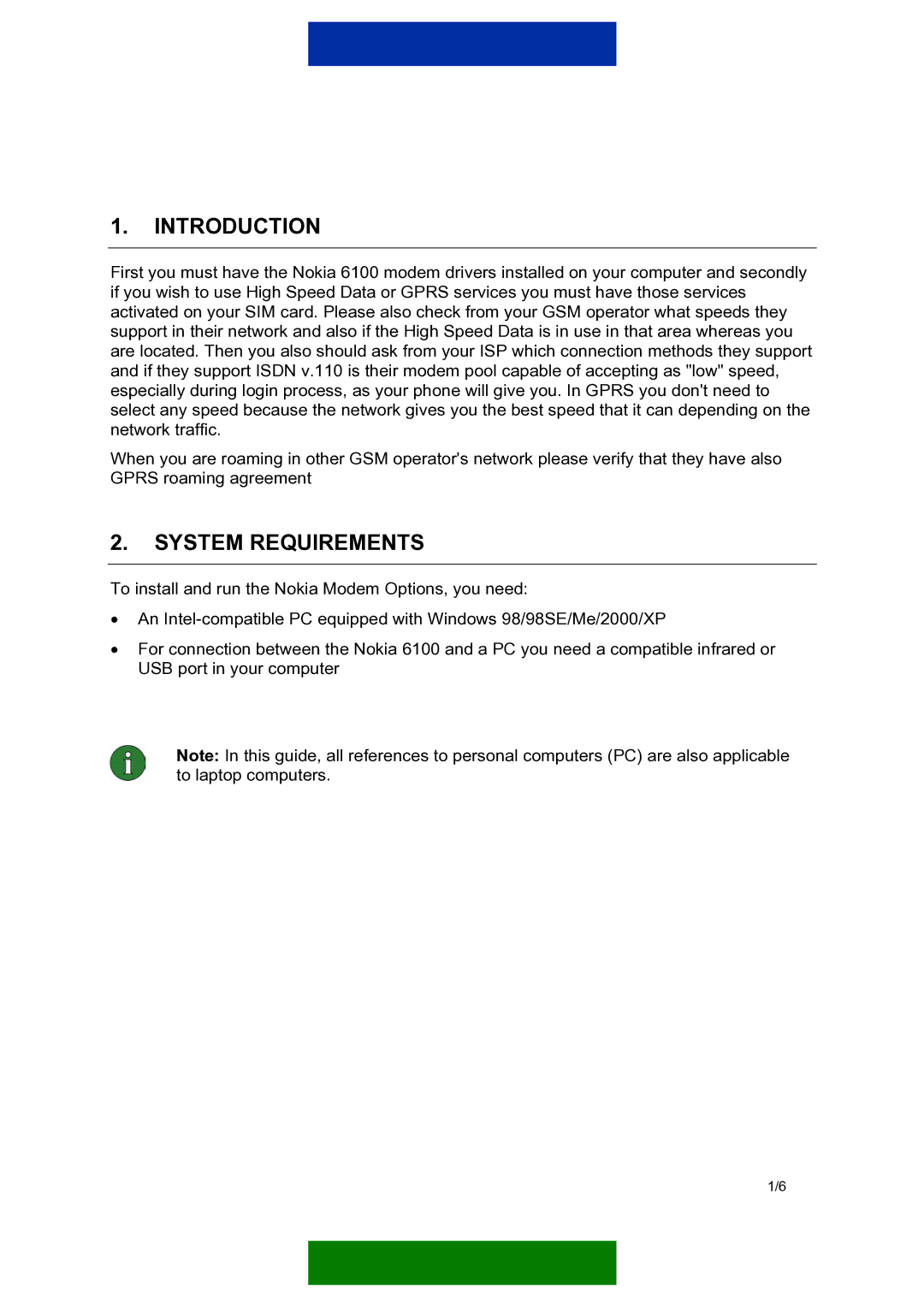Nokia 6100 specifications
The Nokia 6100, introduced in the early 2000s, was a pivotal model in Nokia's lineup, representing the brand's commitment to blending functionality with style. This mobile phone was designed for users who valued a compact, lightweight device without sacrificing essential features.One of the main characteristics of the Nokia 6100 is its sleek and compact design. With dimensions of just 104x44x19 mm and weighing only 80 grams, it fit comfortably in the hand and pocket, making it an ideal choice for users on the go. The phone offered a 128x128 pixel display, rendering 4096 colors, which was quite impressive for its time. The crisp screen was easy to read, providing an excellent user experience for texting and navigating through menus.
The Nokia 6100 was equipped with a user-friendly interface, allowing for easy navigation through its options and features. The phone supported the classic Nokia Series 40 operating system, which provided a variety of downloadable applications and customizable ringtones, enhancing the personal touch for users. Text messaging functionality was robust, allowing for easy sending and receiving of SMS with predictive text input, which made typing quick and efficient.
One notable feature of the Nokia 6100 was its extensive battery life. Equipped with a removable 850 mAh battery, the phone boasted up to 400 hours of standby time and around 5 hours of talk time. This was an appealing aspect for users who needed a reliable device that could last through the day without frequent recharging.
In terms of connectivity, the Nokia 6100 supported the GSM 900/1800 networks, allowing users to stay connected across various regions. The phone also featured the iconic Nokia ringtone, which became a cultural icon during its era.
The Nokia 6100 also included features such as an alarm clock, calculator, and calendar, along with basic games that provided entertainment for users. Overall, the Nokia 6100 was a testament to Nokia's ability to produce functional and stylish mobile phones tailored for everyday use, ensuring its place in the history of mobile technology. Its blend of design, features, and reliability made it a favorite among consumers, contributing to Nokia's prominence during the early years of mobile telephony.

